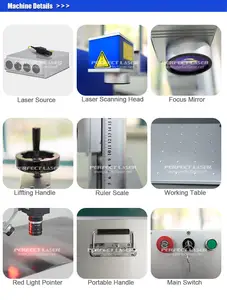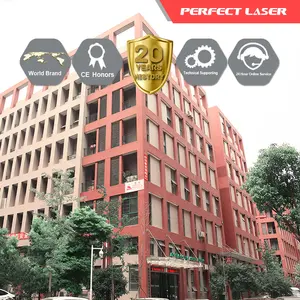
All categories
Featured selections
Trade Assurance
Buyer Central
Help Center
Get the app
Become a supplier

(989 products available)















































There are different types of lasers for air rifles, and each has particular strengths, depending on where and how shooters are likely to use them.
Green lasers are visible even in bright light, making them useful for prospective buyers who want options for day or night shooting. These rifles feature adjusters with impact for tactical purposes.
A red laser is a great choice for low-light shooting. They are not as bright as green lasers, but they are usually more affordable and have a longer battery life.
These laser pointers are mounted to rifle scopes and enhance long-range shooting by providing a visual guidepoint for more accuracy over distance. The scope-lasers are great for target shooting and hunting in an open area.
Air rifle laser boresights are used in the sights to help get them sighted in before firing actual rounds. This tool helps the user align the scope and rifle to improve accuracy during practice.
The Class 3R laser can emit a maximum power of 0.5 to 0.75 mW. The class 3R is a better choice for air pressure rifle fans who are into laser hunting or shooting games.
Class 2 mainly works with an observation period of less than, or equal to, 0.25 seconds. This power range is low enough to avoid eye damage even when exposed for long periods. Class 2 lasers are suitable for guiding or positioning tasks where there is no risk of prolonged exposure to the laser beam.
Rifles with lasers are made of various materials to ensure durability and accuracy.
While the internal components such as the laser emitters may also be made of steel due to their strength, resistance to wear and deformation, and ability to handle high-precision components like gears, trigger mechanisms, and other internal parts used in laser or scope mounting.
This metal is the most commonly used material for making laser housing or casing, given its light weight, strength, and resistance to corrosion. Other than that, the thermal conductivity of aluminum keeps the electronics cool and functioning even under pressure. Usually, it's applied in tactical lasers of laser combos for their lightweight and compact construction, making them easy to handle.
Titanium is super resistant to corrosion and wear, so it is often used in lasers designed for extreme weather or rough terrain hunting. It is worth noting that it is considerably tougher than aluminum, making it ideal for protecting sensitive internal components.
High-density polyethylene plastic is sometimes used in the laser cover though not as commonly. It is lightweight, which makes it easy to carry around, but not as strong as steel or aluminum. Plastic may be used in lower-end laser sights or where cost factors more than durability. However, they are sturdy enough for most casual uses.
Most high-quality laser sights use glass to ensure clear, distortion-free views. They help maintain precision over distance as they don't warp or damage easily.
Air rifle lasers are practically applied in shooting sports for accuracy and to quicken the aim for effective use.
For tactical shooting, lasers help the shooter aim better in high-stress situations where speed and accuracy matter. They are used in training exercises with simulated combat scenarios where there is a need for quick target identification and engagement.
In laser tag games, there are lasers equipped with air guns that will indicate a "hit" when shot at targets. After an interactive target shooting experience, it promotes teamwork and strategic thinking among players.
In laser varmint hunting, lasers help the hunter to spot and track small animals, giving him more time to take an accurate shot. It is especially useful in low-light conditions when the target might be harder to see or when the distance needs to be accurately measured.
For training purposes, laser target guns are used in air rifle shooting classes to help students learn proper aim and trigger control. The visible laser helps show mistakes in real time, helping learners correct bad habits before they become second nature. It can be used indoors in a small space, which is ideal for practicing when weather conditions aren't conducive for practice outside. Good learners use a system that measures and displays data like shot grouping and accuracy, giving users instant feedback on their performance to work on specific weaknesses.
Lasers are used to improve aiming and accuracy by ensuring the laser dot is aligned with the target for a quick and precise shot. This is especially useful at short to moderate ranges where small adjustments in aim make a big difference in hitting the target.
The laser sight for an air rifle can be customized to improve performance, making it a more effective target acquisition tool.
Different colors, such as red and green, can be selected to adjust the performance of the rifle in different lighting conditions or on the basis of personal preferences. For instance, the green laser shows better in bright light, while the red shows better in a low-light setting, so it is less likely to be seen by the target. Choosing laser color affects visibility, range, and battery life; thus, users need to pick the right color that works for them.
Many air rifle lasers have beam settings that can be adjusted to change width and intensity, which can be helpful for different types of shooting or targeting scenarios. A wider beam is more suited for close range, and a focused beam is ideal for long range, giving the user more control over laser precision. This feature also saves battery power.
The two types of adjustments can be made since there is a need to ensure that the laser is perfectly aligned with the scope of the rifle. Windage adjustments enable lateral alignment, while elevation adjustments are for vertical alignment. These adjustments are crucial for long-range shooting to maintain accuracy over distance. They are usually adjustable by turning small screws on the laser sight, allowing for fine-tuned alignment based on the user's needs.
Various mounting options are available, such as mounting the laser under the barrel, at the front, or at the picatinny or weaver rails. Users can choose the mounting position that best balances their rifle and offers the best laser target acquisition. Different mounting styles are compatible with a wide variety of air rifle designs and serve to maintain proper alignment between the laser and the rifle for increased accuracy.
A remote pressure switch can be placed on the rifle, allowing the shooter to activate the laser with a gentle press without changing their grip or aim. It is especially useful in tactical or hunting situations where quick target acquisition is important. Most of these switches are usually mounted to the user's foregrip and connected to the battery for easy and fast activation.
Laser kits are designed to improve accuracy and performance while adding to the fun of air rifle target practice or hunting.
Lasers allow the user to aim more precisely, showing exactly where the shot will land. This makes it easier for the user to hit targets, especially at long distances. Today, a laser can help reduce mistakes caused by human error and help achieve greater accuracy when aiming, especially at long distances or in low-light conditions, making it easier to see the target.
Aim and fire allows for quick and easy target acquisition. This helps in hunting moving game or in shooting competitions where speed is essential. Lasers help locate targets faster than iron sights or scopes, especially in densely wooded areas or when the target is hard to track.
Lasers improve aim under stressful situations, which is helpful in tactical shooting where speed and accuracy are crucial. They provide a quick sight picture to engage threats within close range or at varying speeds of efficiency.
They are versatile, as they are good in bright and low-light conditions. Green laser beams are visible even in daylight, while red lasers are suitable for conditions when the sun is about to set. So, the user can finish the day laser hunting effectively.
Using an LTU laser helps shooters practice breathing, trigger control, and follow-through without firing a shot while improving overall accuracy. It gives instant feedback on aim, so the users learn to improve their technique to become better shooters. Different laser trainer targets give users a chance to work on specific skills with different drills, making practice effective and enjoyable.
A1: Yes, laser sight is mounted on a laser trainer target and used with air rifles to improve accuracy. The trainer target provides instant feedback to the shooter on whether his aim is correct, helping him learn proper technique and improving aim without firing any ammo.
A2: Most laser sights have an effective range of around 50 to 100 yards, depending on factors like the type of laser, environmental conditions, and the user's accuracy. Lasers improve accuracy at short to moderate ranges and are especially useful in low-light conditions.
A3: No, green lasers are not necessarily better than red because they are stronger. While green lasers are more visible in bright light conditions because of their wavelength, red lasers are better for low-light situations. It all depends on personal preference and the conditions under which the air rifle is most likely to be used.
A4: The Class 3R laser can emit a power of 0.5 to 0.75 mW and is a popular choice for laser target shooting because it is powerful enough to see but not strong enough to cause eye damage. It allows for accurate targeting without the risk associated with more powerful laser classes.
A5: These classes differ in the maximum power output. Class 2 may go up to 1.0 mW, while Class 3R can go as high as 0.75 mW. Class 2 is usually suitable for industrial or commercial uses, but Class 3R is specifically designed for safe target practice.